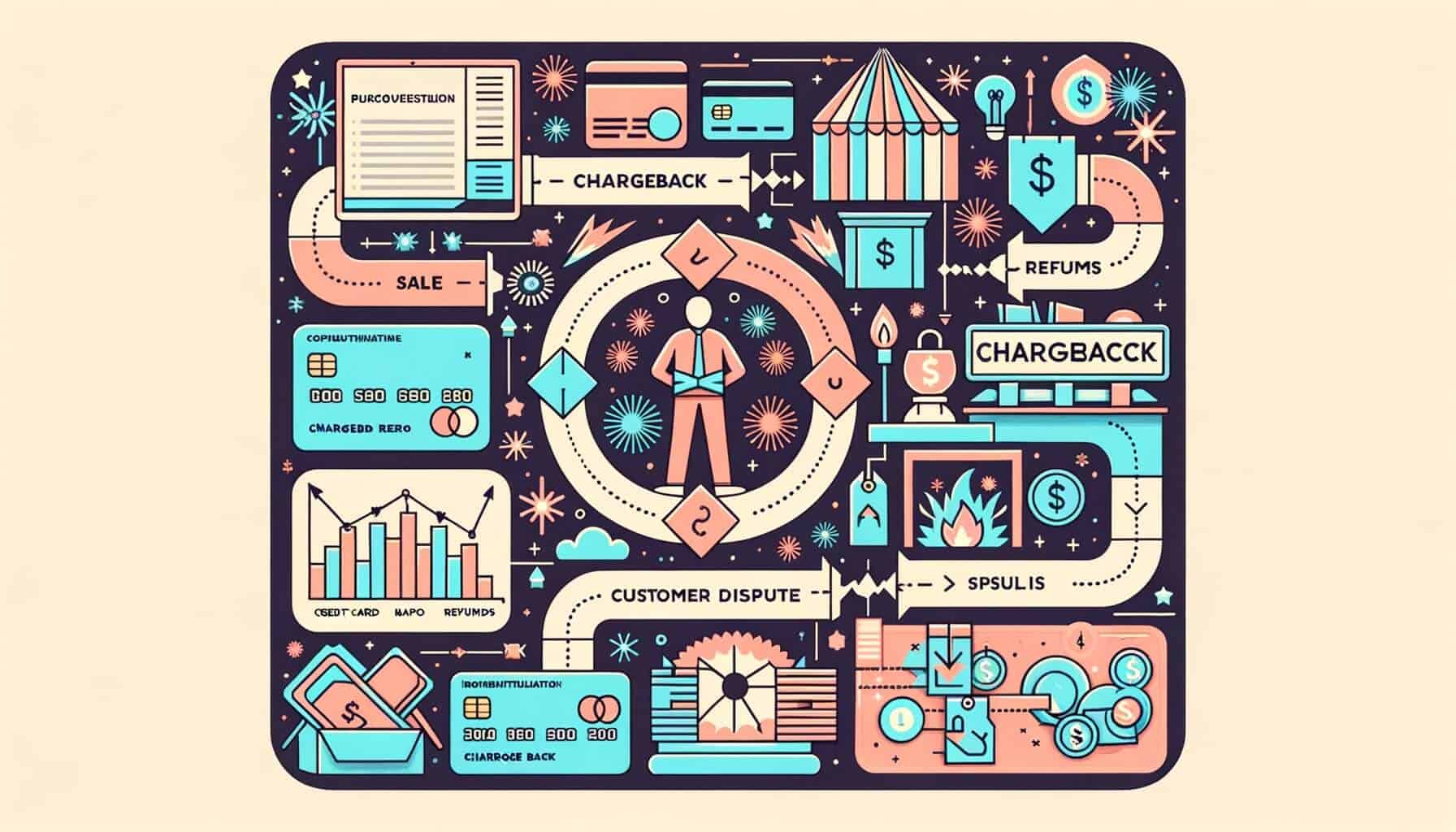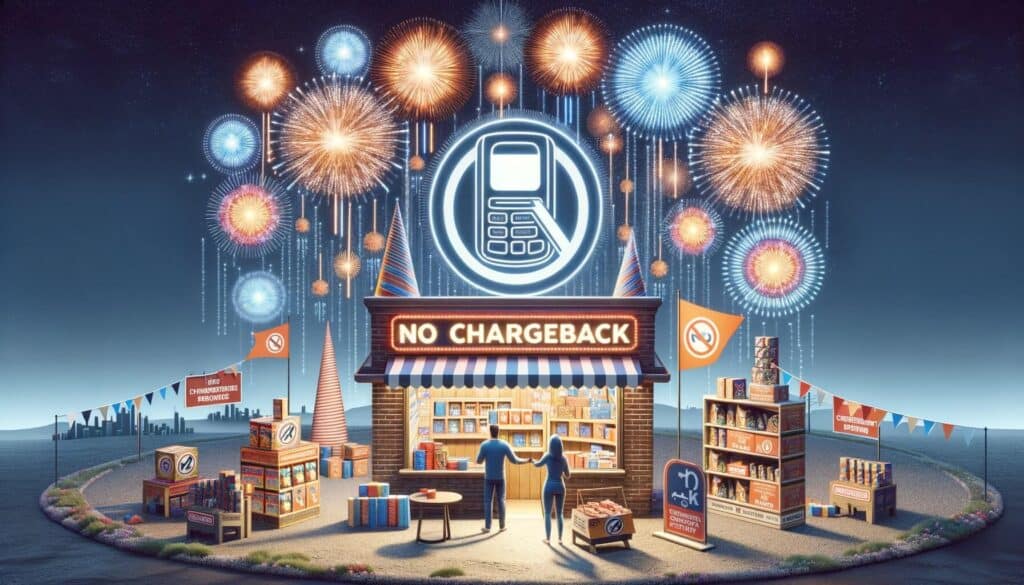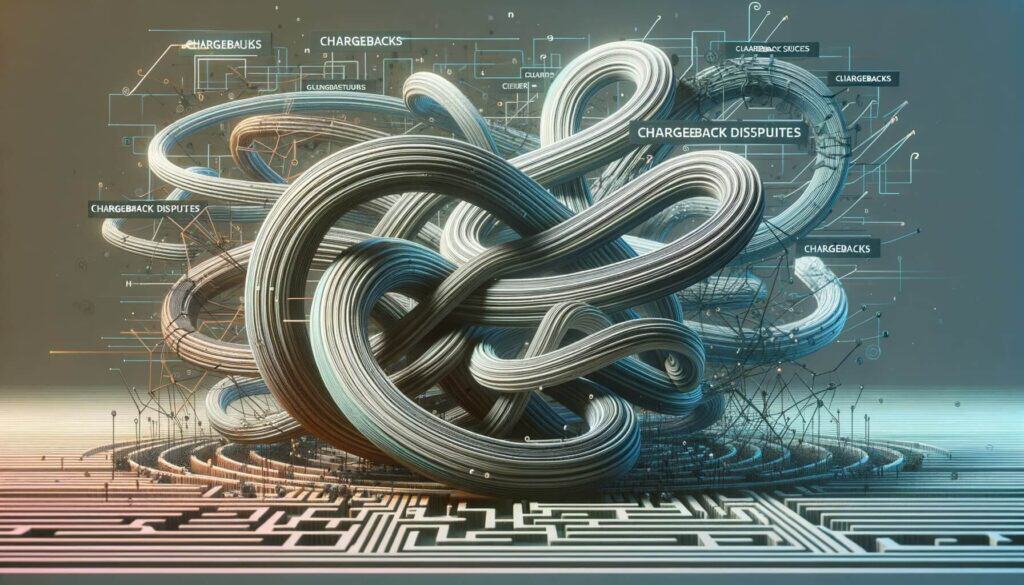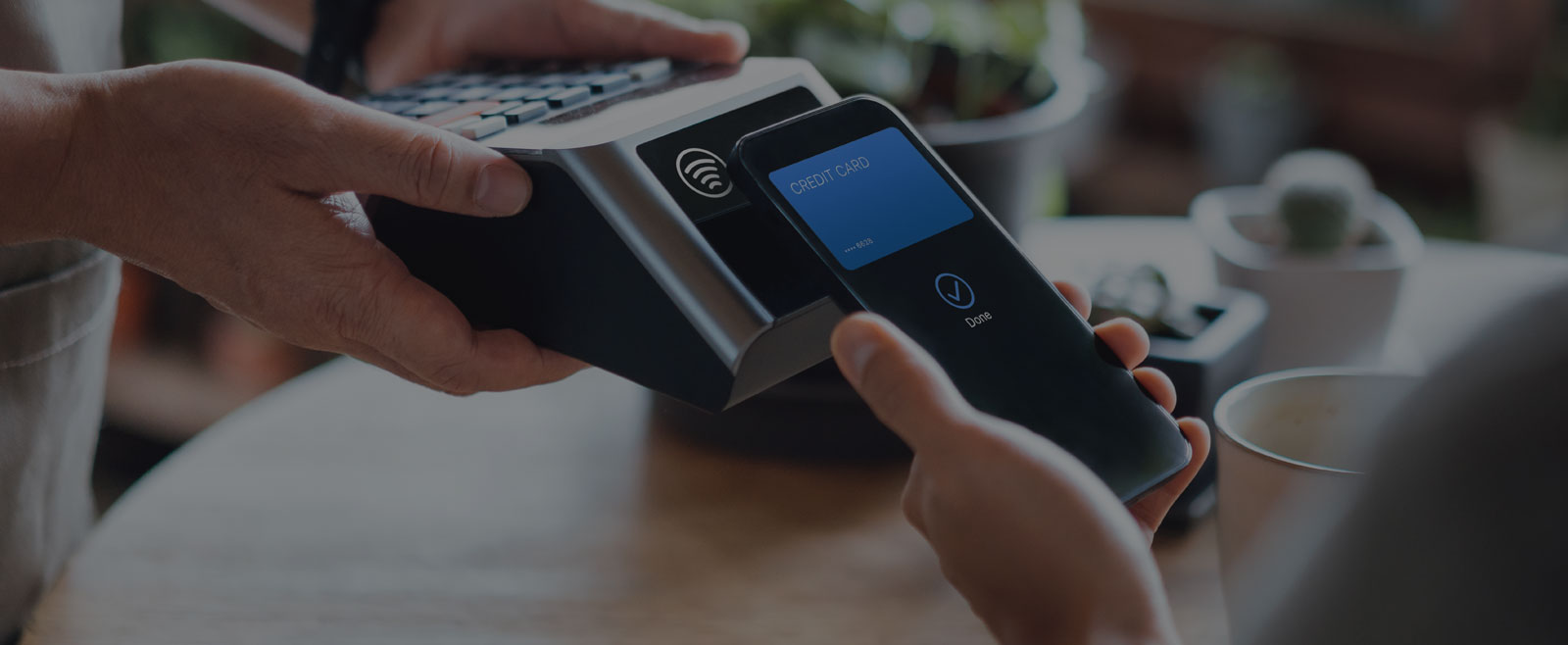
By Shelly Graves March 7, 2025
As a fireworks retailer, it is crucial to understand the concept of chargebacks and how they can impact your business. Chargebacks are a common occurrence in the retail industry, and fireworks retailers are not exempt from this phenomenon.
In this comprehensive guide, we will explore the basics of chargebacks, common reasons for chargebacks in the fireworks retail industry, best practices for preventing chargebacks, how to handle and resolve chargeback disputes, chargeback management tools and services available for fireworks retailers, identifying and preventing fraudulent claims, and establishing effective chargeback policies and procedures.
By the end of this guide, you will have a thorough understanding of chargebacks and be equipped with the knowledge to effectively manage them in your fireworks retail business.
Understanding the Basics: What is a Chargeback?
A chargeback is a transaction reversal initiated by the cardholder’s bank. It allows consumers to dispute a charge on their credit or debit card statement and request a refund. Chargebacks were initially designed to protect consumers from fraudulent or unauthorized transactions. However, they have become a double-edged sword for retailers, as they can be abused by unscrupulous customers to obtain goods or services for free. When a chargeback is initiated, the funds are taken from the retailer’s account and returned to the cardholder, along with any associated fees.
There are several reasons why a chargeback may occur, including fraud, dissatisfaction with the product or service, billing errors, and unauthorized transactions. It is important for fireworks retailers to be aware of these reasons and take proactive measures to prevent chargebacks whenever possible.
Common Reasons for Chargebacks in the Fireworks Retail Industry

1. Fraudulent Transactions: One of the most common reasons for chargebacks in the fireworks retail industry is fraudulent transactions. Fraudsters may use stolen credit card information to make purchases, leaving the legitimate cardholder to dispute the charge. Fireworks retailers should implement robust fraud detection and prevention measures to minimize the risk of fraudulent transactions.
2. Dissatisfaction with the Product: Another common reason for chargebacks is customer dissatisfaction with the product. This could be due to receiving damaged or defective fireworks, not receiving the product as described, or simply not being satisfied with the quality. To prevent chargebacks related to dissatisfaction, fireworks retailers should ensure accurate product descriptions, provide high-quality products, and have a clear and fair return policy in place.
3. Billing Errors: Chargebacks can also occur due to billing errors, such as incorrect amounts charged or duplicate charges. It is essential for fireworks retailers to maintain accurate and transparent billing practices to minimize the risk of chargebacks related to billing errors.
4. Unauthorized Transactions: Chargebacks can occur when a customer claims that they did not authorize a particular transaction. This could be due to stolen card information or a misunderstanding on the part of the cardholder. Fireworks retailers should implement strong authentication measures to verify the identity of the cardholder and minimize the risk of unauthorized transactions.
5. Failure to Deliver: If a fireworks retailer fails to deliver the purchased products within the agreed-upon timeframe, the customer may initiate a chargeback. It is crucial for retailers to have efficient order fulfillment processes in place to ensure timely delivery and minimize the risk of chargebacks related to non-delivery.
Preventing Chargebacks: Best Practices for Fireworks Retailers

Preventing chargebacks is crucial for fireworks retailers, as they can have a significant impact on the bottom line. Here are some best practices that fireworks retailers can implement to minimize the risk of chargebacks:
1. Clear and Accurate Product Descriptions: Providing clear and accurate product descriptions is essential to set the right expectations for customers. This can help prevent chargebacks related to dissatisfaction with the product.
2. High-Quality Products: Offering high-quality fireworks can significantly reduce the risk of chargebacks. Customers are more likely to be satisfied with their purchase if the product meets or exceeds their expectations.
3. Transparent Pricing and Billing: Maintaining transparent pricing and billing practices is crucial to prevent chargebacks related to billing errors. Clearly communicate the total cost of the purchase, including any applicable taxes or fees, and ensure that the billing information is accurate.
4. Secure Payment Processing: Implementing secure payment processing systems can help prevent fraudulent transactions and unauthorized chargebacks. Use encryption technology and comply with industry standards to protect customer payment information.
5. Robust Fraud Detection and Prevention: Implementing robust fraud detection and prevention measures can help identify and prevent fraudulent transactions. Use tools and services that can detect suspicious activity and verify the authenticity of transactions.
6. Efficient Order Fulfillment: Timely delivery of purchased products is essential to prevent chargebacks related to non-delivery. Implement efficient order fulfillment processes to ensure that products are delivered within the agreed-upon timeframe.
7. Clear Return Policy: Having a clear and fair return policy in place can help prevent chargebacks related to dissatisfaction with the product. Clearly communicate the return policy to customers and provide a hassle-free return process.
8. Excellent Customer Service: Providing excellent customer service can go a long way in preventing chargebacks. Address customer concerns promptly and resolve any issues to the customer’s satisfaction.
Chargeback Disputes: How to Handle and Resolve Them

Despite taking preventive measures, fireworks retailers may still encounter chargeback disputes. When a chargeback is initiated, it is important to handle and resolve it effectively to minimize the impact on your business. Here are some steps to follow when handling chargeback disputes:
1. Review the Chargeback Reason: Carefully review the reason provided by the cardholder for the chargeback. Understand the specific issue raised and gather any relevant evidence to support your case.
2. Gather Evidence: Collect any evidence that can help prove that the charge was legitimate and that the customer received the product or service as described. This may include order details, shipping information, tracking numbers, and customer communication.
3. Respond to the Chargeback: Prepare a detailed response to the chargeback, addressing each point raised by the cardholder. Provide clear and concise explanations, along with supporting evidence, to refute the customer’s claim.
4. Submit the Response: Submit your response to the chargeback within the specified timeframe. Ensure that all required documentation is included and that the response is clear and well-organized.
5. Communicate with the Customer: If possible, reach out to the customer directly to address their concerns and attempt to resolve the issue amicably. This can help prevent further escalation and potentially avoid the chargeback altogether.
6. Monitor the Dispute Process: Keep track of the chargeback dispute process and any communication from the cardholder’s bank. Be prepared to provide additional information or evidence if requested.
7. Seek Professional Assistance if Needed: If you are unable to resolve the chargeback dispute on your own, consider seeking professional assistance from chargeback management services or legal experts specializing in dispute resolution.
Chargeback Management Tools and Services for Fireworks Retailers

Managing chargebacks can be a complex and time-consuming process. Fortunately, there are several chargeback management tools and services available to help fireworks retailers streamline their chargeback management processes. Here are some popular tools and services to consider:
1. Chargeback Prevention Software: Chargeback prevention software uses advanced algorithms and machine learning to detect and prevent fraudulent transactions. These tools can help identify suspicious activity and flag potentially fraudulent orders before they result in chargebacks.
2. Chargeback Alerts and Notifications: Chargeback alert services notify retailers when a chargeback is initiated, allowing them to respond promptly and effectively. These services can help retailers stay on top of chargeback disputes and minimize the impact on their business.
3. Chargeback Representment Services: Chargeback representment services specialize in handling chargeback disputes on behalf of retailers. They gather evidence, prepare detailed responses, and submit them to the cardholder’s bank. These services can save retailers time and resources by managing the entire chargeback dispute process.
4. Chargeback Analytics and Reporting: Chargeback analytics and reporting tools provide retailers with valuable insights into their chargeback trends and patterns. These tools can help identify areas of improvement and implement proactive measures to prevent future chargebacks.
5. Chargeback Consultation and Training: Some companies offer chargeback consultation and training services to help retailers understand the chargeback process and develop effective strategies for prevention and dispute resolution. These services can be particularly beneficial for fireworks retailers looking to enhance their chargeback management capabilities.
Chargeback Fraud: Identifying and Preventing Fraudulent Claims
Chargeback fraud, also known as friendly fraud or cyber-shoplifting, is a significant concern for fireworks retailers. Fraudulent chargebacks can result in financial losses and damage to your business’s reputation. It is crucial to be able to identify and prevent fraudulent claims. Here are some strategies to help you combat chargeback fraud:
1. Implement Strong Authentication Measures: Use strong authentication measures, such as two-factor authentication or address verification, to verify the identity of the cardholder. This can help prevent unauthorized transactions and reduce the risk of chargeback fraud.
2. Monitor Suspicious Activity: Keep a close eye on any suspicious activity, such as multiple orders from the same IP address or unusual purchasing patterns. Flag and investigate any orders that raise red flags to prevent fraudulent transactions.
3. Use Fraud Detection Tools: Utilize fraud detection tools and services that can analyze customer behavior and transaction data to identify potential fraud. These tools can help detect patterns and anomalies that may indicate fraudulent activity.
4. Maintain Detailed Order Records: Keep detailed records of all customer orders, including order details, shipping information, and customer communication. This documentation can be invaluable when disputing fraudulent chargebacks.
5. Educate Employees: Train your employees to recognize signs of potential fraud and provide them with clear guidelines on how to handle suspicious transactions. Regularly update your staff on the latest fraud trends and prevention techniques.
6. Establish Chargeback Policies: Establish clear and comprehensive chargeback policies that outline the steps customers should take before initiating a chargeback. Communicate these policies to customers to discourage fraudulent claims.
7. Monitor Social Media and Review Sites: Keep an eye on social media platforms and review sites for any negative reviews or complaints that may indicate potential chargeback fraud. Address these concerns promptly and attempt to resolve them before they escalate to chargebacks.
Chargeback Policies and Procedures for Fireworks Retailers
Having well-defined chargeback policies and procedures is essential for fireworks retailers. These policies and procedures provide guidelines for handling chargebacks and ensure consistency in your approach. Here are some key elements to consider when establishing your chargeback policies and procedures:
1. Clear Communication: Clearly communicate your chargeback policies to customers through your website, order confirmation emails, and other customer touchpoints. Ensure that customers are aware of the steps they should take before initiating a chargeback.
2. Documentation Requirements: Specify the documentation and evidence that customers need to provide when initiating a chargeback. This may include order details, shipping information, and any relevant communication.
3. Timeframe for Chargeback Disputes: Establish a timeframe within which customers must initiate a chargeback dispute. This timeframe should provide sufficient time for customers to review their purchase and raise any concerns, while also allowing you to respond promptly.
4. Chargeback Response Process: Outline the steps that your business will take when responding to chargebacks. This may include gathering evidence, preparing a detailed response, and submitting it within the specified timeframe.
5. Escalation Process: Define the escalation process for unresolved chargeback disputes. Specify when and how you will seek professional assistance or legal intervention if necessary.
6. Chargeback Monitoring and Reporting: Implement a system to monitor and report on chargeback trends and patterns. Regularly review this data to identify areas of improvement and implement proactive measures.
7. Continuous Improvement: Regularly review and update your chargeback policies and procedures to reflect changes in the industry and address any emerging challenges. Seek feedback from your team and customers to identify areas for improvement.
FAQs
Q1. What is the difference between a chargeback and a refund?
Answer: A chargeback is initiated by the cardholder’s bank and involves reversing a transaction and returning the funds to the cardholder. A refund, on the other hand, is initiated by the retailer and involves returning the funds directly to the customer.
Q2. Can I dispute a chargeback?
Answer: Yes, as a retailer, you have the right to dispute a chargeback. You can provide evidence and documentation to support your case and refute the customer’s claim.
Q3. How long does the chargeback process take?
Answer: The chargeback process can vary in length, depending on various factors such as the reason for the chargeback, the complexity of the dispute, and the responsiveness of the parties involved. It can take anywhere from a few weeks to several months to resolve a chargeback.
Q4. Can chargebacks be prevented entirely?
Answer: While it is not possible to prevent chargebacks entirely, implementing best practices and utilizing chargeback management tools and services can significantly reduce the risk of chargebacks.
Q5. Can chargebacks affect my ability to accept credit card payments?
Answer: Excessive chargebacks can have a negative impact on your ability to accept credit card payments. Acquiring banks and payment processors may impose penalties or even terminate your merchant account if chargeback ratios exceed certain thresholds.
Conclusion
Chargebacks can be a significant challenge for fireworks retailers, but with the right knowledge and strategies, they can be effectively managed.
By understanding the basics of chargebacks, identifying common reasons for chargebacks in the fireworks retail industry, implementing best practices for prevention, handling and resolving chargeback disputes, utilizing chargeback management tools and services, identifying and preventing fraudulent claims, and establishing effective chargeback policies and procedures, fireworks retailers can minimize the impact of chargebacks on their business.
Remember, prevention is key, but in the event of a chargeback, prompt and effective resolution is crucial. Stay proactive, stay informed, and protect your business from the potential pitfalls of chargebacks.
